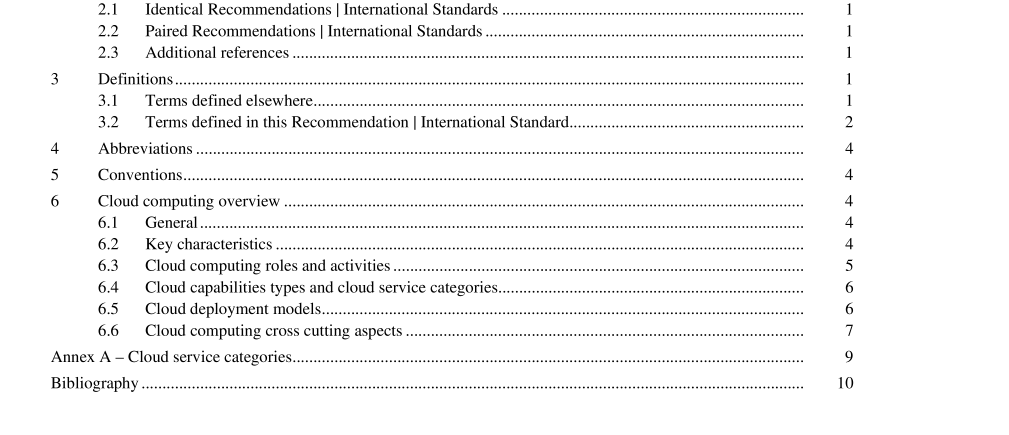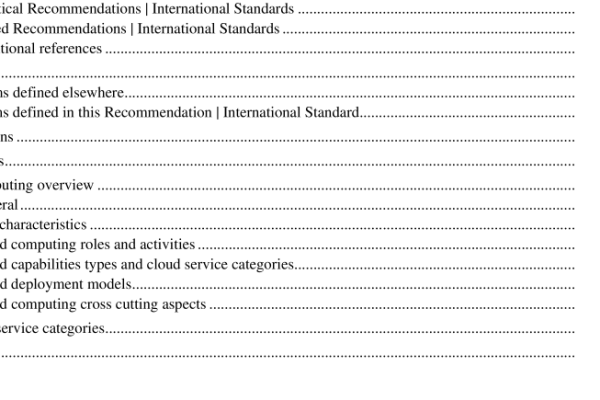ISO IEC 17788:2014 pdf download – Information technology — Cloud computing — Overview and vocabulary.
6.4 Cloud capabilities types and cloud service categories A cloud capabilities type is a classification of the functionality provided by a cloud service to the cloud service customer, based on the resources used. There are three different cloud capabilities types: application capabilities type, infrastructure capabilities type, and platform capabilities type, which are different because they follow the principle of separation of concerns, i.e. they have minimal functionality overlap between each other. The cloud capabilities types are: – Application capabilities type: A cloud capabilities type in which the cloud service customer can use the cloud service provider’s applications; – Infrastructure capabilities type: A cloud capabilities type in which the cloud service customer can provision and use processing, storage or networking resources; – Platform capabilities type: A cloud capabilities type in which the cloud service customer can deploy, manage and run customer-created or customer-acquired applications using one or more programming languages and one or more execution environments supported by the cloud service provider. There are only three cloud capabilities types defined in this Recommendation | International Standard. These cloud capabilities types should not be confused with other categorizations of cloud services. A cloud service category is a group of cloud services that possess some common set of qualities. A cloud service category can include capabilities from one or more cloud capabilities types. Representative cloud service categories are: – Communications as a Service (CaaS): A cloud service category in which the capability provided to the cloud service customer is real time interaction and collaboration; – Compute as a Service (CompaaS): A cloud service category in which the capabilities provided to the cloud service customer are the provision and use of processing resources needed to deploy and run software; – Data Storage as a Service (DSaaS): A cloud service category in which the capability provided to the cloud service customer is the provision and use of data storage and related capabilities; – Infrastructure as a Service (IaaS): A cloud service category in which the cloud capabilities type provided to the cloud service customer is an infrastructure capabilities type; – Network as a Service (NaaS): A cloud service category in which the capability provided to the cloud service customer is transport connectivity and related network capabilities; – Platform as a Service (PaaS): A cloud service category in which the cloud capabilities type provided to the cloud service customer is a platform capabilities type; – Software as a Service (SaaS): A cloud service category in which the cloud capabilities type provided to the cloud service customer is an application capabilities type. It is expected that there will be additional cloud service categories (see Annex A). This Recommendation | International Standard does not imply that any cloud service category is more important than any other. 6.5 Cloud deployment models Cloud deployment models represent how cloud computing can be organized based on the control and sharing of physical or virtual resources.
ISO IEC 17788:2014 pdf download – Information technology — Cloud computing — Overview and vocabulary






